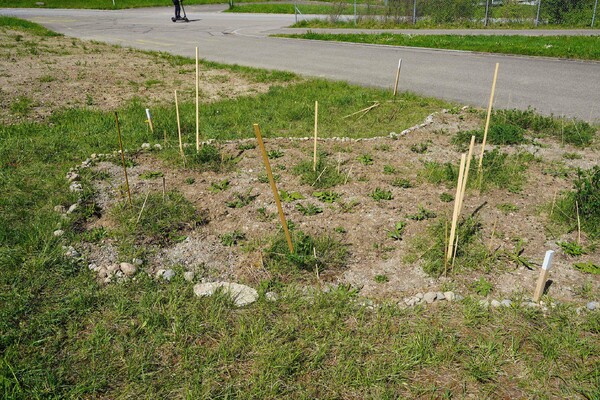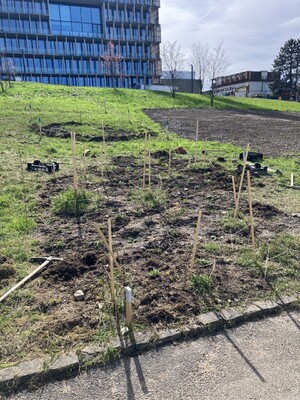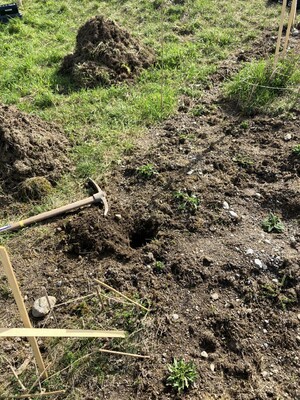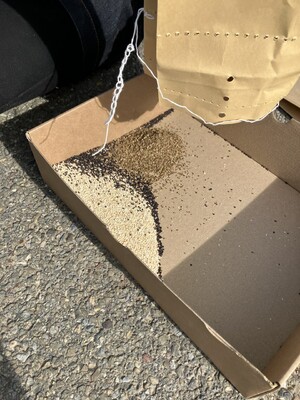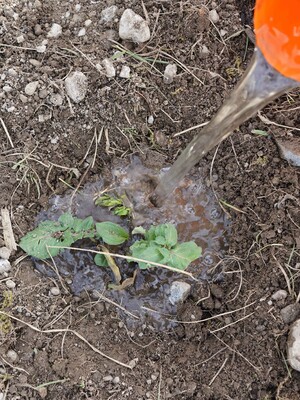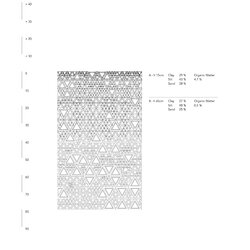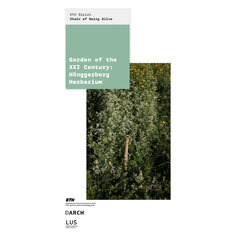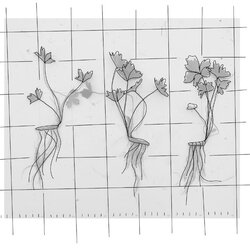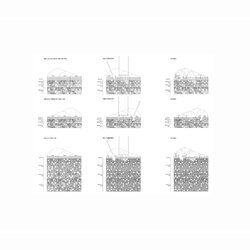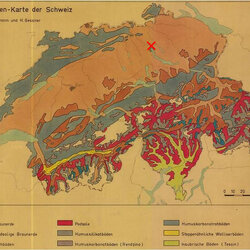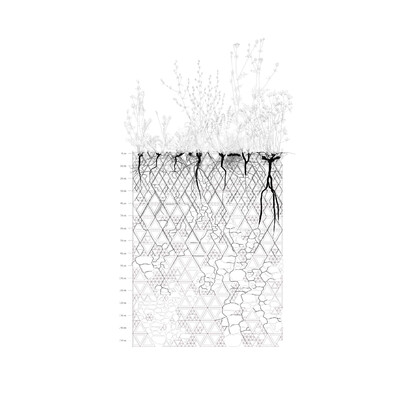
Regenerative Practice: Planting and Seeding for Soil Decompaction
The in-depth study of the plants in the garden and its underground life forms has enabled us to propose an intervention that responds directly to the site, following the method of the Garden of the XXI century.
Part of the garden was compacted by a truck route in 2005 during the construction of the neighboring daycare center. The soil there is very stony and contains building materials just below a thin layer of about 10 cm of topsoil. Soil life is poor, roots have difficulty penetrating deep into the soil and plants have difficulty growing. The most important plants to be found on the site are Medicago sativa, Sanguisorba minor and Bromus erectus. These plants tend to grow in dry, nutrient-poor soils, what corresponds well to the situation we find on site. The intervention aims to preserve the deep-rooted species that are already growing on site and add new plants with similar characteristics. The hypothesis is that these will decompact the soil, slowly penetrating the hard layers of stones and earth, while creating more attractive conditions for the establishment of new soil life over time.
After marking the intervention area, we identified existing plants with strong and deep roots - Medicago sativa and Sanguisorba minor. Around these plants, we removed the grass layer by hand, taking care to leave all the soil in the area, while only removing potential competition for our new plants. We used 90 seedlings of Salvia pratensis, Centaurea scabiosa, Chicoricum intibus, Malva moscheta alba and Onobrychis viciifolia that we have bought in a local garden centre. Between these agents of change we seeded a mix of seeds including Medicago sativa, Papaver rhoeas, Sinapis arvensis, Sinapis alba, Silene pratensis, Daucus carota, Brassica rapa L. var. Rapa and Oenothera biennis. After distributing the seeds on the bare soil, we pressed them with some light weight into the ground. With small stones that we have found while taking the grasses out, we constructed a small barrier around the new garden. In the beginning we supported growth by watering the plants a little. After a few weeks, we can already see the seedlings growing and the seeds sprouting, but we will see how they develop in the long term.
The two drawings below show the initial and hypothetical future state of the soil before and after the planting of soil decompaction plants with deep and strong roots.



